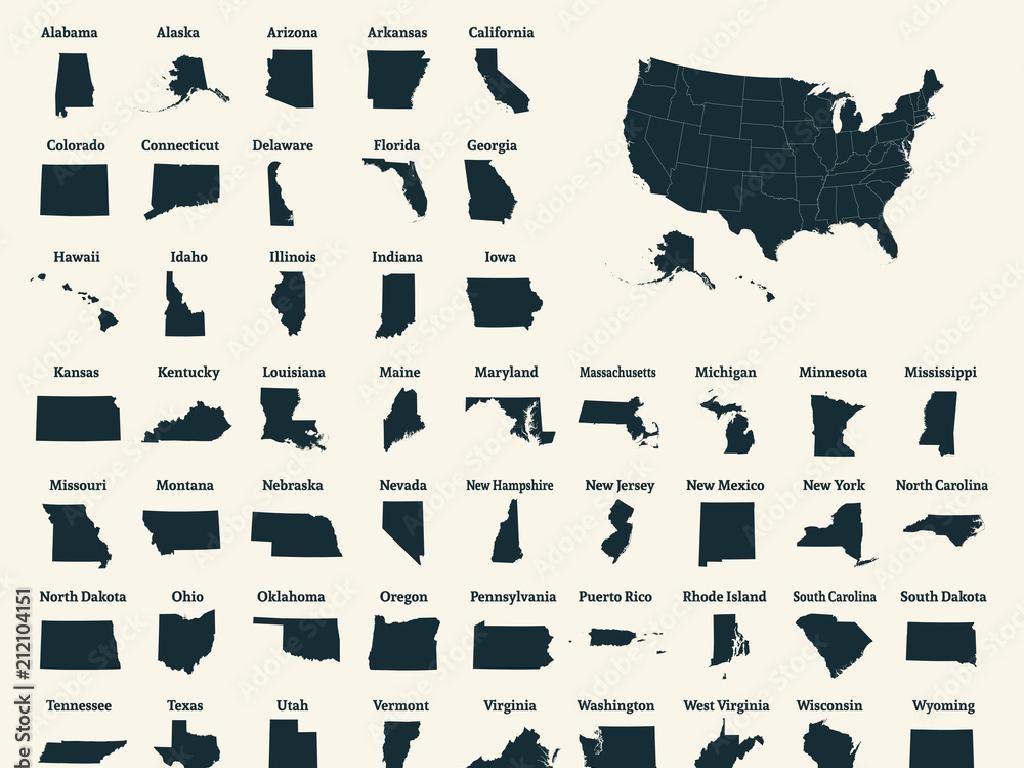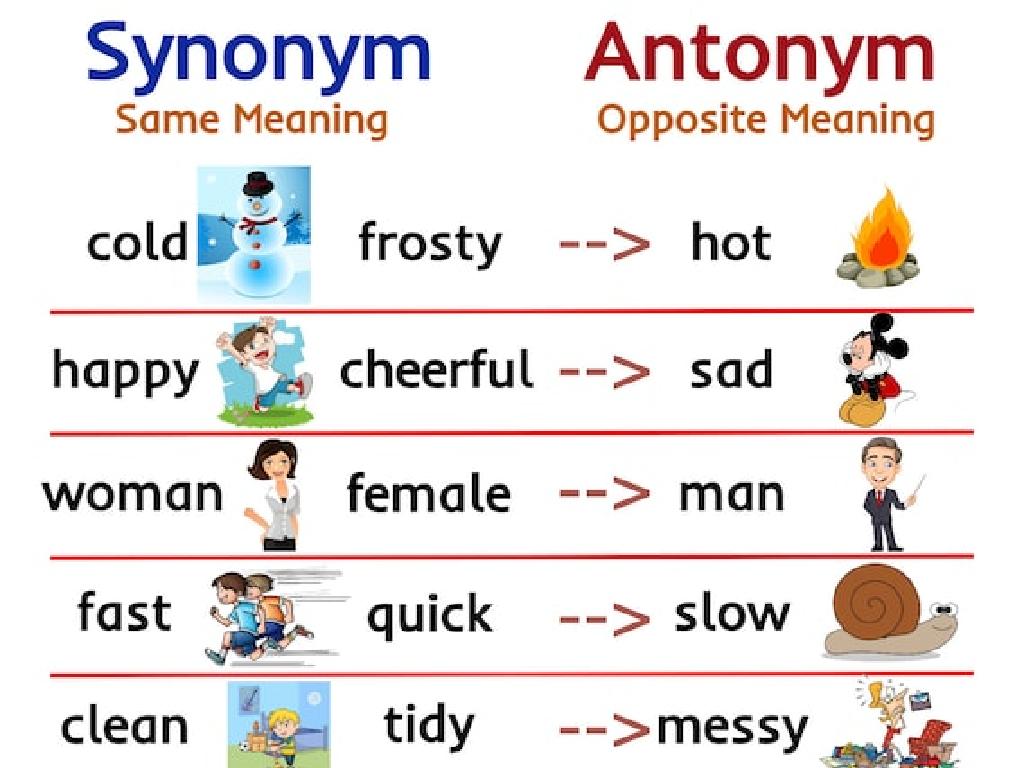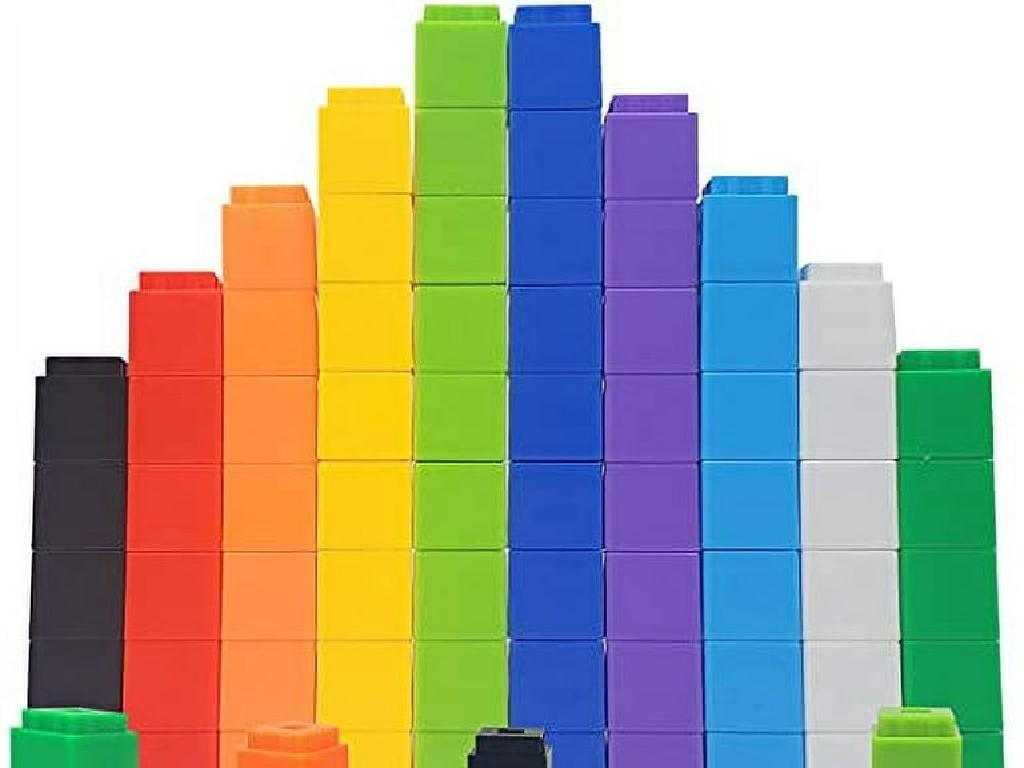Classify Numbers
Subject: Math
Grade: Sixth grade
Topic: Rational Numbers
Please LOG IN to download the presentation. Access is available to registered users only.
View More Content
Welcome to Rational Numbers!
– Explore types of numbers
– Define rational numbers
– Numbers that can be expressed as a fraction a/b, where a and b are integers and b is not zero.
– Daily life examples
– Money, measurements, and cooking fractions are common examples of rational numbers.
– Practice with real numbers
|
This slide introduces students to the concept of rational numbers, which is a part of the broader topic of number classification. Begin by discussing the different types of numbers such as natural numbers, whole numbers, integers, and then focus on rational numbers. Explain that rational numbers include any number that can be written as a fraction with integers. Provide relatable examples such as money (e.g., $0.75), measurements (e.g., 1/2 inch), and cooking measurements (e.g., 3/4 cup) to illustrate the concept. Encourage students to think of other examples from their daily lives. Conclude with an activity where students identify rational numbers from a list of various numbers to reinforce their understanding.
Exploring the World of Numbers
– What exactly is a number?
– A number is a mathematical object used to count, measure, and label.
– Exploring number types
– Natural numbers: 1, 2, 3, …; Whole numbers: 0, 1, 2, 3, …
– Introduction to integers
– Integers include negative numbers, zero, and positive numbers.
– Rational numbers’ place
– Rational numbers are fractions of integers, like 1/2 or 4/5.
|
Begin the lesson by defining what a number is and its purpose in mathematics. Then, introduce the different types of numbers starting with natural numbers, which are the counting numbers, and whole numbers, which include zero. Next, explain integers, which expand the number line to include negative numbers. Finally, discuss where rational numbers fit into this hierarchy, emphasizing that they are ratios of integers and can be represented as fractions or decimals. Use visual aids like a number line to help students understand the concept. Encourage students to think of examples of each type of number to solidify their understanding.
Understanding Rational Numbers
– Rational numbers as fractions
– A number expressed as the quotient of two integers, like 1/2 or 3/4.
– Numerator and denominator roles
– Numerator: top number, shows parts taken. Denominator: bottom number, shows total parts.
– Every rational number is a point
– Each rational number corresponds to a unique point on the number line.
– Locating numbers on the number line
– Practice placing 1/2, 3/4, or -5/6 on a number line to understand their value.
|
This slide introduces the concept of rational numbers to sixth-grade students. Begin by explaining that rational numbers can be represented as fractions, where the numerator (top number) indicates how many parts we have, and the denominator (bottom number) shows how many equal parts the whole is divided into. Emphasize that every fraction corresponds to a point on the number line, and this is how we can visualize their values. Encourage students to think of the number line as a tool for understanding the size and order of different rational numbers. Provide examples and possibly a hands-on activity where students place various rational numbers on a number line to reinforce the concept.
Properties of Rational Numbers
– Commutative property explained
– Order doesn’t affect sum/product: a + b = b + a, a × b = b × a
– Associative & Distributive properties
– Grouping doesn’t change sum/product: (a + b) + c = a + (b + c), a × (b × c) = (a × b) × c
– Adding & Multiplying rational numbers
– Combine like terms to simplify: a(b + c) = ab + ac
– Significance of zero and one
– Zero is the additive identity, one is the multiplicative identity
|
This slide introduces the fundamental properties of rational numbers, which are crucial for understanding arithmetic operations. The commutative property indicates that the order in which two numbers are added or multiplied does not change the result. The associative property shows that the way numbers are grouped in addition or multiplication does not affect the sum or product. The distributive property allows for the multiplication of a number by a sum by multiplying each addend separately and then adding the products. Zero plays a unique role as adding it to any number does not change the number, making it the additive identity. One is the multiplicative identity because multiplying any number by one gives the number itself. These concepts are foundational for algebra and should be practiced with various examples.
Classifying Rational Numbers
– Understanding rational numbers
– Numbers that can be expressed as a fraction a/b, where a and b are integers and b is not zero.
– Examples: fractions, decimals, whole numbers
– 1/2 (fraction), 0.75 (decimal), 3 (whole number) are all rational numbers.
– Group activity: classify numbers
– Work in groups to classify a list of numbers as fractions, decimals, or whole numbers.
– Discuss classification with peers
– Share your group’s classifications and reasoning with the class.
|
This slide introduces the concept of rational numbers and how to classify them. Start by explaining that rational numbers include fractions, decimals, and whole numbers. Provide clear examples of each and ensure students understand that all these forms can represent rational numbers. The group activity will involve students working together to classify a series of numbers, which will help reinforce their understanding through practical application. After the activity, facilitate a discussion where groups can explain their classifications, allowing students to learn from each other and solidify their grasp of the concept.
Rational Numbers in Real Life
– Money as rational numbers
– Every cent is a fraction of a dollar, e.g., $0.75 is 3/4 of a dollar
– Measurements in cooking
– Recipes use fractions for ingredients, e.g., 1/2 tsp salt
– Time as rational numbers
– Hours and minutes are parts of a day, e.g., 1.5 hours is 1 1/2 hours
|
This slide aims to show students how rational numbers are used in everyday life. Money is a perfect example, as all amounts can be expressed as fractions of a dollar. Cooking measurements often use fractions to quantify ingredients, which helps students understand the practical use of rational numbers in recipes. Time is also divided into fractions, such as minutes into hours, which can be represented by rational numbers. Encourage students to think of other examples where they use fractions or decimals in their daily activities to further solidify their understanding of rational numbers.
Class Activity: Let’s Classify Numbers!
– Work in groups to classify numbers
– Follow the provided instructions
– Each group will receive a set of numbers to classify as rational or irrational
– Discuss your findings within your group
– Consider why a number belongs to a certain category
– Share your results with the class
– Select a representative to present your group’s classification
|
This activity is designed to encourage collaboration and discussion among students as they classify numbers into rational and irrational categories. Provide each group with a mixed set of numbers and instruct them to classify each number. They should discuss the characteristics that define rational numbers, such as being able to be expressed as a fraction of integers, and compare these to irrational numbers, which cannot be expressed as a simple fraction. After the activity, each group will choose a representative to share their findings with the class, explaining their reasoning for each classification. This will help reinforce their understanding of number types and provide an opportunity for public speaking and justification of their thoughts.






